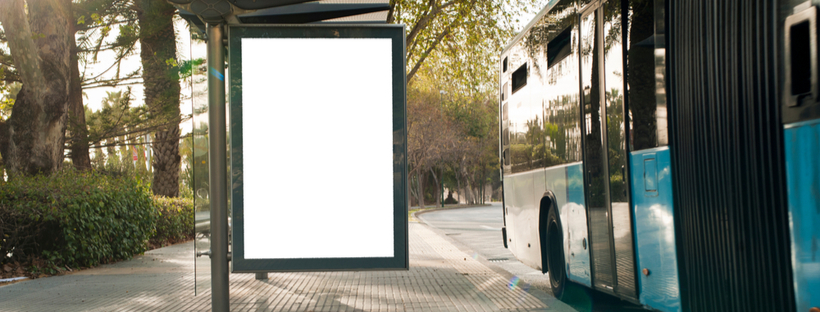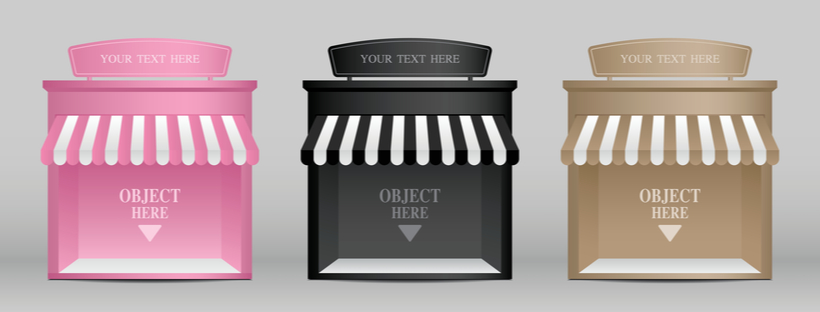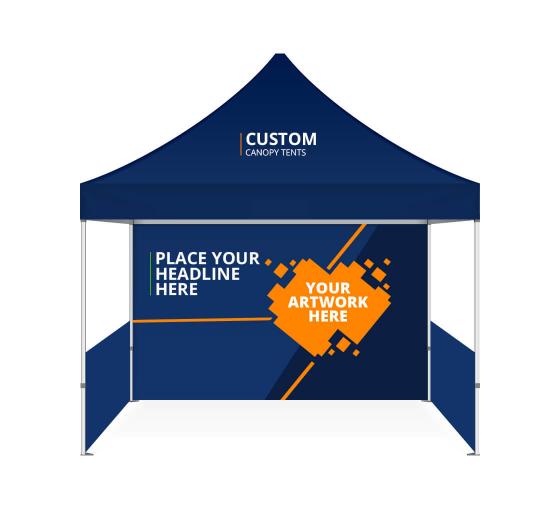One of the most crucial aspects of running a business is marketing and advertising. If you have recently started a business in Los Angeles, you would probably be brimming with questions about the legalities of installing signs and banners there.
The Los Angeles administration has placed certain legal restrictions and regulatory guidelines, which you must abide by to prevent attracting fines and legal trouble. Before you delve into the regulatory restrictions for business signs in Los Angeles, here are a few definitions created by the administration:
Sign

Any whole or a section of a display board, screen, or wall that announces, demonstrates, declares, or displays a message and draws the public’s attention.
Sign Area
Sign area is the space circumscribed by the smallest geometric figure and constructed using a maximum of eight straight lines. These lines will encompass all letters, figures, designs, symbols, and graphics. This enclosure will also include the framing, background material, any illuminated spaces, and attention-drawing tools that make up a crucial aspect of an individual message.
Business owners can advertise their brand using several advertisement tools such as signs, vinyl banners, flags, and more. Here are the several types of business signs and their respective regulations as levied by the administration of Los Angeles:
Illuminated Architectural Canopy Sign
Definition – a confined illuminated framework attached to the building wall with the face being parallel to it and the message etched into its surface.
Regulations –
- A minimum of 8’ height above the edge of roadway grade or sidewalk grade is required. The sign shall not extend beyond the top of the building wall.
- The area of all such signs must not go beyond 2 square feet for every foot of street frontage, with one square foot for every foot of the building’s facade.
- Advertisement space shall not take up a 4’ distance along the exterior wall at one corner of the premises’ street facade. There must be an additional 4’ gap with every 50’ of the facade of the building.
- The total sign area comprising the illuminated architectural canopy, wall, and roof must not go beyond 2 square feet for each foot of frontage of the street, with one square foot being for each foot of the facade of the building.
Awning Sign

Definition – A roof-like structure that acts as a shelter over a storefront, door, or window.
Regulations –
- The sign must be limited only to the valence region of the awning, with a maximum height of 12′. It must be parallel to the face of the building.
- Installation is prohibited on an awning with a valence height greater than 14’ from the edge of roadway grade or the sidewalk to the valence’s top.
- A new building permit is necessary before installing a new awning.
- Illumination of the sign is prohibited.
- The awning frame must not be combustible.
- Awnings with less than 15’ clearance above the sidewalk must not extend into or take up over two-thirds of the sidewalk’s width calculated from the premises.
Inflatable Objects
Definition – A cold air inflated object made using flexible fabric, used as a sign, which can assume different shapes, rest on a structure or ground, attached in place and to a portable blower motor to fill the object with air.
Regulations –
- No inflatable section of the object must extend over 5’ above grade.
Interior Mall Sign
Definition – A sign installed in a covered mall that is not typically visible from the public space.
Regulations –
- Total height must not go beyond 36”. If the sign is vertically oriented, it must not exceed a height and width of 96” and 36”, respectively.
- The area must not go beyond 20% of the wall area.
- The area of installation must be at least 18” from neighboring tenants.
- The edges and the back of the sign must be fully enclosed in metal.
Information Sign

Definition – A sign that displays a message to give directions, menus, instructions, selections, or various address numerals.
Regulations –
- Total height must not go beyond 6’6” above the edge of the roadway grade or sidewalk, which is closest to the sign.
- The total area must not go beyond 25 square feet.
Marquee Sign
Definition – A sign hooked up to an approved marquee’s periphery built entirely from metal or any non-combustible substance such as glass or approved plastic.
Regulations –
- The sign must not go beyond the periphery’s perimeter.
- A new building permit must be issued for a new marquee.
- The vertical dimension of the sign shall not exceed 8’.
- The sign must be in compliance with L.A.B.C. Section 3106.
Monument Sign
Definition – A sign installed directly upon an existing or artificially constructed grade with a height that does not go beyond 12” from the existing or artificially constructed grade to the sign’s bottom. This sign has a horizontal dimension equal to or sometimes higher than its vertical dimension.
Regulations –
- The height of the sign must not exceed 8’ overall above the edge of the roadway grade or sidewalk grade closest to the sign.
Model Home Sign

Definition – A sign for a model dwelling, ideal for tract homes.
Regulations –
- Only one sign is permitted per model.
- The installation area must not be beyond 12 square feet.
- The sign shall be primarily installed for the identification or imparting directions.
- Pennants, cloth fabric banners, posters, spinners, ribbons, light bulb strings, streamers, and similar moving devices are not allowed.


 Posted in
Posted in 



